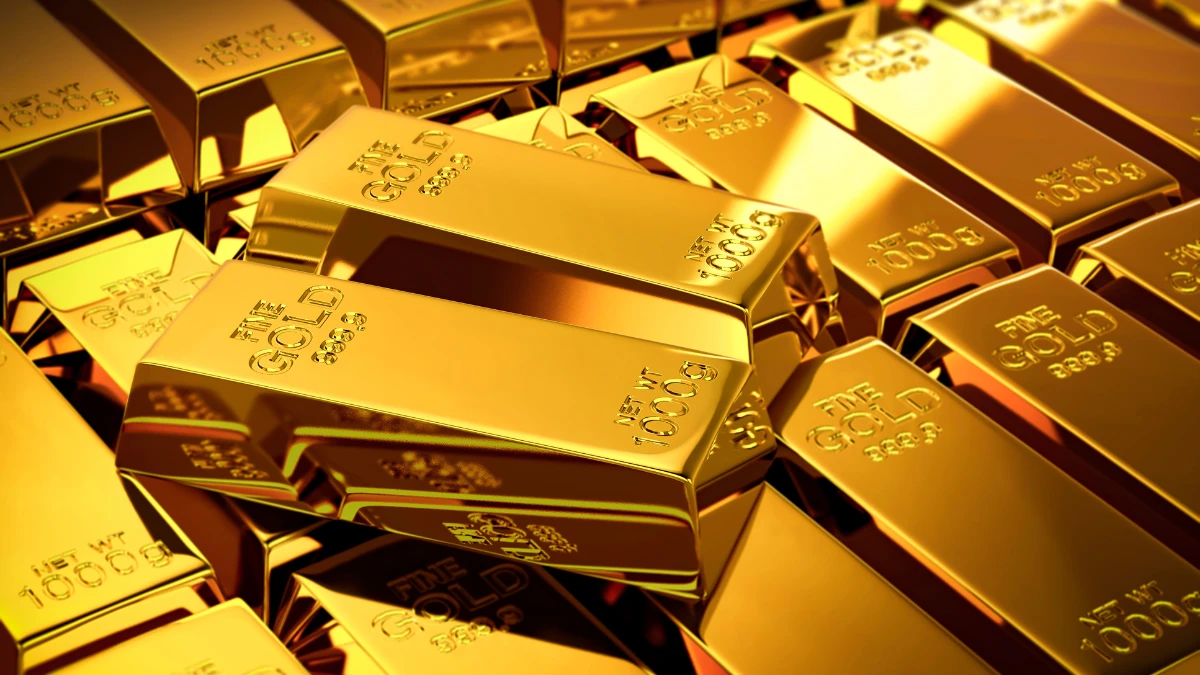
Gold Price Today: Global Guide to Understanding Rates Across 119 Countries (2025)
Discover what affects gold price today globally. Complete guide covering 119 countries, karats, import duties, currency conversion & live tracking. Updated hourly with 24K, 22K, 18K prices.
Published Oct 15, 2025 | Updated Oct 15, 2025 | 📖 16 min read
On This Page
- What Determines Gold Price Today?
- Gold Price Today by Region: A Global Comparison
- Understanding Gold Karat Purity and Price Today
- How Gold Price Today is Actually Calculated
- Why Gold Price Changes Daily (And Sometimes Hourly)
- Best Ways to Track Gold Price Today
- Gold Price Today and Investment Decisions
- Making Charges and Total Cost Today
- Future Outlook: What Affects Tomorrow's Gold Price
- Conclusion: Making Sense of Gold Price Today
Understanding gold prices in today's global market requires more than just checking a single number. The gold price today varies significantly across 119 countries worldwide, influenced by factors ranging from international spot prices and currency exchange rates to local import duties and retail premiums. Whether you're looking to invest in gold, purchase jewelry, or simply track market trends, this comprehensive guide will help you understand how gold prices work across the globe.
At MarketsHost, we track live gold prices across 119 countries and 177 cities, updating rates hourly to ensure you have access to the most accurate information. This guide explains what determines the gold price today, why it differs by location, and how you can make informed decisions based on current market conditions.
What Determines Gold Price Today?
The gold price today is not a single universal number—it's a complex calculation that starts with international benchmarks and adapts to local market conditions. Understanding these factors is crucial for anyone tracking gold prices globally.
International Spot Price (USD Base)
The foundation of all gold pricing starts with the international spot price, quoted in US dollars per troy ounce or per gram. This benchmark comes from major commodity exchanges:
- LBMA (London Bullion Market Association): Sets the global standard with twice-daily "fixing" prices. The LBMA PM price is the most widely referenced benchmark worldwide, used by European markets and many international traders.
- COMEX (New York Commodity Exchange): Provides real-time futures pricing that influences spot rates across American markets.
- MCX (Mumbai Commodity Exchange): India's primary gold trading platform, reflecting regional demand and import dynamics specific to the world's largest gold consumer market.
These spot prices fluctuate constantly during trading hours, responding to global economic news, geopolitical events, currency movements, and central bank policies. The gold price today at 9 AM may differ from the price at 3 PM, which is why hourly updates are essential for accurate tracking.
Currency Exchange Rates
Since gold is priced globally in US dollars, currency exchange rates play a massive role in determining local gold prices. When tracking 174 different currencies worldwide, even small fluctuations can significantly impact the gold price today in specific countries.
For example, if the LBMA spot price is $143.71 per gram and the USD/INR exchange rate is 83.50, the base gold price in India (before duties and premiums) would be approximately ₹12,000 per gram. However, if the rupee weakens to 85.00, that same USD spot price would translate to ₹12,215—a ₹215 increase with no change in the actual gold market, purely due to currency movement.
This currency effect explains why gold prices today in countries with stronger currencies (like Switzerland or Norway) appear lower in local currency terms compared to countries with weaker currencies (like Turkey or Argentina).
Import Duties and Taxes
One of the most significant factors creating price differences across countries is import duty. Since most countries don't produce gold domestically, they must import it—and governments apply various duty rates:
- Zero Duty Countries: UAE, Singapore, Hong Kong, and Switzerland impose no import duty, making them some of the cheapest places globally to buy gold.
- Low Duty (1-3%): United States, Canada, Australia, and most European Union countries have minimal duties.
- Medium Duty (5-8%): Several Southeast Asian and African nations apply moderate import duties.
- High Duty (10-15%): India (12.5%), Pakistan (11%), and Bangladesh (10%) have some of the world's highest gold import duties, significantly increasing local prices.
Additionally, countries may apply VAT or GST on gold purchases. India's 3% GST on gold purchases adds another layer to the final price consumers pay.
Retail Premiums and Market Markups
Beyond import duties, retailers and jewelers add their own premiums to cover business costs, market positioning, and profit margins. These retail premiums typically range from 2-4% globally:
- India: 2.5% retail premium added to MCX-based wholesale prices
- UAE: 2.5% premium despite zero import duty (competitive market)
- USA: 3.0% retail premium on spot prices
- UK/Europe: 4.0% premium reflecting higher operational costs
These premiums mean that even if two countries have the same spot price and exchange rate, the retail gold price today will still differ based on local market conditions, competition, and consumer demand.
Local Demand and Supply Dynamics
Regional demand patterns also influence gold prices. India and China together account for over 50% of global gold demand, creating persistent price pressure during festival seasons:
- Dhanteras and Diwali (India): October-November sees 25-30% surge in demand, often driving premiums higher
- Chinese New Year: January-February demand spike in East Asia
- Wedding Seasons: Regional wedding seasons across South Asia increase jewelry demand
- Ramadan and Eid: Middle Eastern markets see elevated gold purchases during Islamic festivals
Gold Price Today by Region: A Global Comparison
Let's examine how the gold price today translates across major regions, using current market data. These examples illustrate why the same commodity can have vastly different prices depending on where you're buying.
Middle East: The Global Low-Price Leader
United Arab Emirates (Dubai): Dubai consistently offers some of the world's lowest gold prices due to zero import duty, high trading volumes, and intense competition in the Dubai Gold Souk. With 22K gold priced around د.إ453-455 per gram today, Dubai attracts gold buyers from across the globe. The wholesale-to-retail price gap is minimal due to market transparency and competitive pressures.
Saudi Arabia, Qatar, Kuwait, Bahrain: Other Gulf nations follow similar pricing patterns to UAE, typically within 1-2% of Dubai prices. The region's tax-free environment and established gold trading infrastructure keep prices competitive.
South Asia: High Import Duties Drive Premium Pricing
India: As the world's largest gold consumer, India presents an interesting pricing paradox. Despite massive demand, prices are among the world's highest due to 12.5% import duty plus 3% GST. Today's 22K gold price in Mumbai sits around ₹11,740-11,750 per gram, approximately 15-18% higher than Dubai's equivalent price. This premium exists because India imports nearly all gold consumed domestically.
Pakistan and Bangladesh: Similar high-duty regimes result in comparable premiums over international spot prices, with Pakistan's 22K gold around PKR 24,500-25,000 per gram.
North America: Moderate Premiums, Stable Markets
United States: The US gold market typically trades within 3-4% of COMEX spot prices. With 24K gold around $143-144 per gram today, American buyers benefit from zero import duty but pay slightly higher retail premiums than Middle Eastern markets. The US market focuses more on investment-grade gold (coins, bars) rather than jewelry gold.
Canada: Canadian gold prices closely track US prices, adjusted for CAD/USD exchange rates, with similar premium structures.
Europe: LBMA-Linked Pricing
United Kingdom: London's role as home to the LBMA means UK gold prices directly reflect the global benchmark. Today's 24K gold price around £112-114 per gram includes approximately 4% retail premium. UK buyers benefit from VAT exemption on investment gold (coins, bars over 90% purity).
Germany, France, Switzerland: Continental European prices cluster around LBMA benchmarks with slight variations for local currency strength and retail market structure. Switzerland's strong franc means lower nominal prices (CHF 130-132/gram), while Turkey's weaker lira results in higher nominal prices (₺4,500-4,600/gram) despite similar dollar-equivalent costs.
Asia-Pacific: Hub vs. Consumer Markets
Singapore: As a major trading hub with zero import duty, Singapore offers pricing competitive with UAE, with 24K gold around S$194-196 per gram today. Singapore serves as a price benchmark for Southeast Asian markets.
China: The world's second-largest gold consumer sees prices influenced by domestic production (China is also the world's largest gold producer) and government controls on gold imports. Today's 24K gold price around ¥476-478 per gram reflects both market dynamics and regulatory factors.
Australia: As both a major gold producer and consumer, Australia sees moderate premiums over spot prices, with 24K gold around A$222-224 per gram.
Understanding Gold Karat Purity and Price Today
The gold price today varies not just by location but also by purity level. Understanding karat systems is essential for comparing prices accurately across markets.
24K Gold (99.9% Pure)
24K gold represents the highest purity level available in commercial markets—99.9% pure gold with only trace amounts of other metals. This is the standard for:
- Investment bars and coins
- Central bank reserves
- Gold ETFs and digital gold platforms
- Preferred in China, Singapore, and most Western markets
Today's 24K gold price serves as the benchmark from which all other purities are calculated. If 24K is $143.71/gram, this represents the purest form you can buy commercially.
22K Gold (91.67% Pure)
22K gold contains 22 parts pure gold and 2 parts other metals (typically copper or silver), making it 91.67% pure. This is the preferred purity for:
- Jewelry in India, Pakistan, and Bangladesh
- Traditional Middle Eastern gold jewelry
- Gold jewelry that balances purity with durability
The 22K gold price today is calculated as (24K price × 22/24). So if 24K is $143.71/gram, 22K should be approximately $131.82/gram. In India, where 22K dominates, today's price sits around ₹11,740/gram after applying all duties and premiums.
18K Gold (75% Pure)
18K gold contains 18 parts pure gold and 6 parts other metals, making it 75% pure. This purity is popular for:
- Western jewelry (especially in USA and Europe)
- Luxury brand jewelry (Cartier, Tiffany, etc.)
- Colored gold (white gold, rose gold variations)
Today's 18K gold price equals (24K price × 18/24) or exactly 75% of 24K prices. With 24K at $143.71/gram, 18K should be around $107.78/gram before local duties and premiums.
How Gold Price Today is Actually Calculated
Let's walk through a real example of how the gold price today is calculated for different countries, using current market data.
Step-by-Step Calculation Example
Starting Point: International Spot Price
LBMA 24K gold spot price today: $143.71 USD per gram
Example 1: Dubai, UAE
- USD spot price: $143.71/gram
- Currency conversion: $143.71 × 3.67 (USD to AED) = د.إ527.21/gram
- Import duty: 0% (duty-free) = د.إ527.21/gram
- Retail premium: +2.5% = د.إ540.39/gram (24K retail price)
- For 22K: د.إ540.39 × (22/24) = د.إ495.36/gram
Example 2: Mumbai, India
- USD spot price: $143.71/gram
- Currency conversion: $143.71 × 83.50 (USD to INR) = ₹11,999.69/gram
- MCX markup: +6.11% = ₹12,732.58/gram
- Retail premium: +2.5% = ₹13,050.90/gram (24K retail price)
- For 22K: ₹13,050.90 × (22/24) = ₹11,963.33/gram
- Note: 3% GST added at point of sale (not in base price)
Example 3: New York, USA
- USD spot price: $143.71/gram (already in USD)
- Currency conversion: None needed
- Import duty: 0% = $143.71/gram
- Retail premium: +3.0% = $148.02/gram (24K retail price)
- For 22K: $148.02 × (22/24) = $135.85/gram
Example 4: London, UK
- USD spot price: $143.71/gram
- Currency conversion: $143.71 × 0.79 (USD to GBP) = £113.53/gram
- Import duty: 0% (EU holdover policy) = £113.53/gram
- Retail premium: +4.0% = £118.07/gram (24K retail price)
- For 22K: £118.07 × (22/24) = £108.23/gram
This breakdown shows why Dubai offers the cheapest gold globally (zero duty + low premium), while India has premium pricing (high duty + currency factors).
Why Gold Price Changes Daily (And Sometimes Hourly)
The gold price today likely differs from yesterday's price—and tomorrow's price will probably differ from today's. Understanding these fluctuations helps you make better timing decisions.
Global Economic Factors
US Dollar Strength: Since gold is priced in USD globally, dollar strength inversely affects gold prices. When the dollar strengthens against other currencies, gold becomes more expensive for non-US buyers, reducing demand and putting downward pressure on prices. Conversely, a weakening dollar makes gold cheaper internationally, increasing demand and driving prices up.
Inflation Expectations: Gold traditionally serves as an inflation hedge. When inflation data comes in higher than expected, investors flock to gold, driving prices up. Central bank policy announcements regarding interest rates (which affect inflation) can cause significant gold price movements within hours.
Geopolitical Tensions: Gold is a "safe-haven" asset. Military conflicts, political instability, or trade disputes typically drive investors toward gold, increasing prices. Recent examples include Russia-Ukraine tensions, Middle East conflicts, and US-China trade relations—all creating gold price volatility.
Local Currency Movements
Even if the international USD spot price remains stable, your local gold price today can change due to currency fluctuations:
- Indian rupee depreciation → higher INR gold prices (even with stable USD price)
- Turkish lira volatility → dramatic daily swings in local TRY gold prices
- Japanese yen strength → lower JPY gold prices during yen appreciation
Central Bank Gold Reserves
Central banks worldwide hold approximately 35,000 metric tons of gold. When major central banks (Federal Reserve, European Central Bank, People's Bank of China) announce gold purchase programs or reserve adjustments, markets react strongly. China's consistent gold accumulation over the past decade has provided persistent upward price pressure.
Market Sentiment and Technical Trading
Beyond fundamentals, technical traders using algorithms and chart patterns influence short-term price movements. Support and resistance levels at psychological price points ($2,000/ounce, $2,100/ounce) create volatility as traders execute large orders near these thresholds.
Best Ways to Track Gold Price Today
With prices updating hourly and varying by location, having reliable tracking tools is essential.
MarketsHost Global Coverage
MarketsHost offers the most comprehensive gold price tracking available:
- 119 Countries: From Algeria to Zimbabwe, covering virtually every significant gold market worldwide
- 177 Cities: City-level pricing for major urban centers, accounting for local market variations
- Hourly Updates: Prices refresh every hour, ensuring data is never more than 60 minutes old
- 174 Currencies: Prices displayed in local currencies with live exchange rate calculations
- Three Purities: 24K, 22K, and 18K prices calculated for each location
- Mobile Optimized: Track prices on any device with responsive design
Regional Exchange Websites
For specific regions, official commodity exchange websites provide authoritative data:
- India: MCX (Multi Commodity Exchange) - mcxindia.com for Mumbai-based pricing
- London/Europe: LBMA - lbma.org.uk for twice-daily fixing prices
- USA: COMEX/CME Group - cmegroup.com for futures and spot prices
- Dubai: Dubai Gold & Commodities Exchange - dgcx.ae
Why Live Tracking Matters
Gold price volatility can be significant. During major market events, prices can swing $5-10 per gram (or more) within a single day. For someone buying 100 grams of gold jewelry, a $5/gram difference means $500—enough to justify checking current prices before making purchases.
Gold Price Today and Investment Decisions
Understanding today's gold price is just the first step. Smart investing requires context and strategy.
When to Buy Based on Today's Price
Rather than trying to time the perfect bottom, consider these approaches:
Dollar-Cost Averaging: Instead of investing a lump sum, spread purchases over several months. If gold is $143/gram today, buy a portion now, then continue buying monthly regardless of price. This strategy averages out volatility and removes emotional decision-making.
Seasonal Patterns: Historically, gold prices tend to be lower during summer months (June-August) in Western markets due to reduced jewelry demand. Prices often rise in Q4 (October-December) as Indian festival season and holiday jewelry buying increase global demand.
Technical Support Levels: If today's price is near recent multi-month lows and technical indicators show oversold conditions, it may present a favorable entry point. Conversely, prices at multi-year highs might warrant waiting for pullbacks.
Jewelry vs. Investment Gold Pricing
The gold price today for jewelry differs significantly from investment gold:
Investment Gold (Coins, Bars, Digital Gold):
- Prices closest to spot rates (typically 2-5% above spot)
- Buyback rates are higher (typically 95-98% of current spot)
- Easier liquidity and lower transaction costs
- Tax advantages in many countries (VAT-exempt in EU, for example)
Jewelry Gold:
- Making charges add 15-40% to gold value (varies by design complexity)
- Buyback rates much lower (typically 80-85% of current spot)
- Value includes craftsmanship but makes it less liquid as investment
- Subject to GST/VAT in most countries
Making Charges and Total Cost Today
When buying jewelry, the gold price today is just one component of your total cost.
Understanding Making Charges
Making charges (also called fabrication charges) compensate jewelers for design, craftsmanship, and labor. These vary dramatically:
India (Per Gram Method):
- Simple designs: ₹300-500/gram
- Medium complexity: ₹500-800/gram
- Heavy/intricate designs: ₹800-1,500/gram
Middle East (Percentage Method):
- Dubai: 5-12% of gold value
- Sharjah/Abu Dhabi: 8-15% of gold value
- Saudi Arabia: 10-18% of gold value
Western Countries (Fixed or Percentage):
- USA: $20-50 per gram or 15-25% markup
- UK: £15-35 per gram or 20-30% markup
- Australia: A$30-60 per gram or 18-28% markup
Wastage Charges
During jewelry manufacturing, some gold is lost to filing, polishing, and refining. Jewelers charge for this "wastage":
- Machine-made jewelry: 3-6% wastage
- Hand-crafted jewelry: 6-10% wastage
- Intricate designs: 10-15% wastage
Some jewelers include wastage in making charges, while others itemize it separately. Always clarify the total cost breakdown.
GST and Taxes
Most countries apply taxes on jewelry purchases:
- India: 3% GST on gold value + 5% GST on making charges
- EU Countries: VAT-exempt on investment gold, but 15-25% VAT on jewelry
- USA: State sales tax (0-10% depending on state)
- UAE/Singapore: Zero tax (major advantage)
Using Jewelry Cost Calculators
MarketsHost provides free jewelry purchase cost calculators on every gold price page. Input today's gold price, jewelry weight, making charges, and wastage to see your total cost instantly. This transparency helps you compare jeweler quotes and avoid overpaying.
Future Outlook: What Affects Tomorrow's Gold Price
While no one can predict gold prices with certainty, understanding upcoming catalysts helps you anticipate potential movements.
Short-Term Factors (Days to Weeks)
- Federal Reserve Meetings: US interest rate decisions directly impact dollar strength and gold prices
- Inflation Data Releases: CPI and PPI reports from major economies create volatility
- Geopolitical Events: Elections, conflicts, trade negotiations can cause sudden price spikes
- Technical Chart Patterns: Breakouts above resistance or below support trigger algorithmic trading
Medium-Term Factors (Months)
- Indian Festival Season (Oct-Nov): Diwali and wedding season increases demand, typically supporting prices
- Chinese New Year (Jan-Feb): Asian demand surge historically creates price support
- Central Bank Purchases: Quarterly reports on official sector gold buying influence sentiment
- Mining Supply Changes: Production disruptions or new mine openings affect supply dynamics
Long-Term Factors (Years)
- Global Debt Levels: Rising government debt often correlates with gold appreciation
- Currency Devaluation Trends: Persistent dollar weakness or emerging market currency crises support gold
- Technological Demand: Growing electronics and green energy applications create new gold demand sources
- Generational Wealth Transfer: Shifting investment preferences as younger generations inherit wealth
Conclusion: Making Sense of Gold Price Today
The gold price today is far more than a simple number—it's a complex interplay of international benchmarks, currency movements, local duties, and market dynamics. Whether you're in Mumbai paying ₹11,740/gram for 22K gold or in Dubai paying د.إ495/gram for the same purity, understanding why these prices differ empowers you to make better decisions.
Key takeaways to remember:
- International USD spot price forms the foundation, but local factors create the final price you pay
- Import duties range from 0% (UAE, Singapore) to 12.5% (India), causing 10-18% price differences
- Currency fluctuations affect your local gold price even when international prices remain stable
- Karat purity significantly impacts price—always compare equivalent purities across markets
- Jewelry costs include gold price + making charges + wastage + taxes
- Investment gold (coins, bars) trades closer to spot prices than jewelry gold
- Timing purchases around seasonal lows and using dollar-cost averaging reduces risk
With MarketsHost's coverage of 119 countries and 177 cities, you have instant access to the gold price today anywhere in the world. Whether you're buying jewelry for a wedding, investing in gold bars, or simply tracking your portfolio value, accurate and timely information makes all the difference.
Gold has served as a store of value for over 5,000 years, and understanding how gold prices work today ensures you can continue this tradition wisely. Check live prices hourly, compare rates across countries if you're traveling, and use our free calculators to understand your total costs before making any purchase.
The gold price today may vary from yesterday and tomorrow, but with the right knowledge and tools, you can navigate the global gold market with confidence.
Frequently Asked Questions About Gold Price Today
. What is the gold price today globally?
The gold price today starts with international benchmarks like LBMA London ($143-144/gram) and varies by country based on currency exchange rates, import duties (0-12.5%), and retail premiums (2-4%). Dubai offers the lowest prices globally due to zero import duty, while India has premium pricing due to 12.5% duty plus 3% GST. MarketsHost tracks live prices across 119 countries with hourly updates.
. Why does gold price today differ by country?
Gold price differences occur due to four main factors: (1) Currency exchange rates - USD spot price converts differently to INR, AED, EUR, etc. (2) Import duties - ranging from 0% (UAE, Singapore) to 12.5% (India). (3) Retail premiums - local market markups of 2-4%. (4) Local demand/supply - festival seasons and regional preferences affect prices. These combined factors create 15-20% price gaps between cheapest (Dubai) and most expensive (India) markets.
. How often does gold price today update?
International gold spot prices update continuously during commodity exchange trading hours (24/5 for COMEX, specific hours for LBMA and MCX). MarketsHost updates all 119 country prices hourly, ensuring data is never more than 60 minutes old. During major market events, prices can change significantly within hours, making frequent updates essential for buyers and investors.
. Is today a good day to buy gold?
Rather than timing a single 'perfect' day, use dollar-cost averaging by spreading purchases over several months. Consider seasonal patterns - gold tends to be cheaper in summer months (June-August) and rises during Q4 (October-December) due to Indian festival and holiday demand. Check if today's price is near recent multi-month lows. For large purchases, tracking 30-day price trends helps identify favorable entry points.
. Why is gold price today higher in India than Dubai?
India's gold is 15-18% more expensive than Dubai primarily due to: (1) 12.5% import duty (Dubai has 0%), (2) 3% GST on gold purchases, (3) Higher retail premiums due to market structure, (4) Currency conversion factors. For example, if Dubai 22K gold is د.إ495/gram, the same purity in Mumbai costs ₹11,740/gram (approximately د.إ581 equivalent), making India about 17% more expensive for identical gold purity.
. What is 22K gold price today vs 24K?
22K gold (91.67% pure) costs exactly 91.67% of 24K gold (99.9% pure). If 24K is $143.71/gram today, 22K should be $131.82/gram (calculated as 24K × 22/24). In India, where 22K dominates jewelry markets, today's 22K price is around ₹11,740/gram while 24K is ₹13,012/gram. Middle East and South Asian countries prefer 22K for jewelry due to better durability, while Western markets favor 18K (75% pure) for fashion jewelry.
. How to track gold price today in my country?
Use MarketsHost's gold price pages covering 119 countries with hourly updates. Visit marketshost.com/gold-price/{country-code}/ (e.g., /gold-price/in/ for India, /gold-price/ae/ for UAE, /gold-price/us/ for USA). Each page shows live prices for 24K, 22K, and 18K gold in local currency, updated every hour. For city-specific prices, check marketshost.com/gold-price/{country}/{city}/ for 177 major cities worldwide. Prices include currency conversions, import duties, and retail premiums.
. Does gold price today include making charges?
No, the gold price today shows only the raw gold value per gram. Making charges (fabrication fees) are added separately when buying jewelry: India typically charges ₹300-1,500/gram depending on design complexity, Dubai charges 5-15% of gold value, and Western markets add 15-30% markup. Use MarketsHost's free Jewelry Cost Calculator on gold price pages to calculate total cost including making charges, wastage (3-12%), and GST/taxes.
. What affects gold price today?
Five major factors influence today's gold price: (1) US dollar strength - stronger dollar lowers gold prices globally. (2) Inflation expectations - higher inflation drives investors to gold. (3) Geopolitical tensions - conflicts and instability increase safe-haven demand. (4) Central bank policies - interest rate changes affect gold attractiveness. (5) Local currency movements - rupee depreciation raises INR gold prices even if USD price is stable. Market sentiment and technical trading add short-term volatility.
. Where to find accurate gold price today?
Most accurate sources: (1) MarketsHost - 119 countries, 177 cities, hourly updates with transparent calculation breakdowns. (2) LBMA.org.uk - Official London fixing prices (twice daily). (3) MCXIndia.com - India's commodity exchange for Mumbai-based pricing. (4) CMEGroup.com - US COMEX futures and spot prices. (5) DGCX.ae - Dubai Gold & Commodities Exchange. Avoid outdated jeweler boards or third-party aggregators without clear update timestamps.
. Is gold price today same as yesterday?
Usually not. Gold prices change continuously during trading hours, responding to global economic news, currency movements, and market sentiment. Typical daily price fluctuations range from 0.3-1.5%, but major events can cause 2-5% swings in a single day. MarketsHost's hourly updates ensure you see price changes throughout the day. To track trends, compare today's price with 7-day, 30-day, and 90-day averages available on gold price pages.
. How is gold price today calculated?
Gold price calculation follows these steps: (1) Start with international USD spot price from LBMA/COMEX (e.g., $143.71/gram). (2) Convert to local currency using exchange rates (e.g., × 83.50 for INR). (3) Add import duty percentage (0-12.5% by country). (4) Add retail premium (2-4% markup). (5) For 22K/18K, multiply by purity ratio (22/24 or 18/24). Example: $143.71 × 83.50 INR rate × 1.125 duty × 1.025 premium = ₹13,012/gram (24K India retail price).




